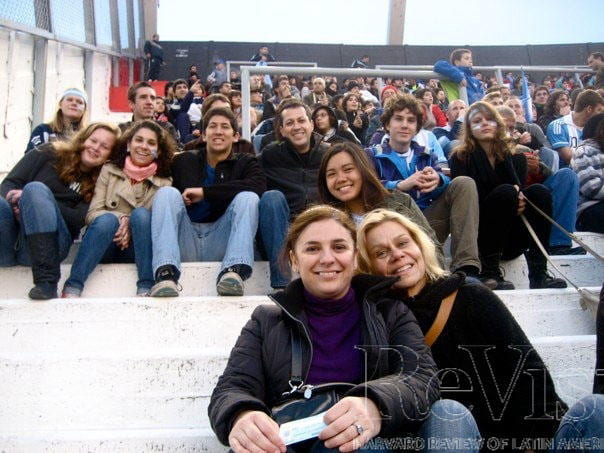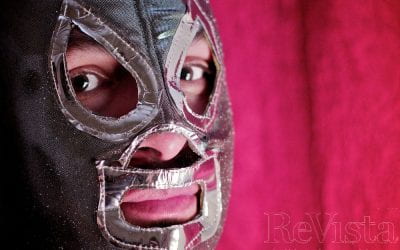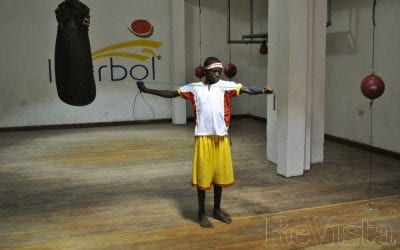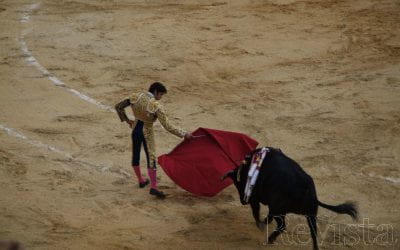¡Gooooal!
Soccer and Study Abroad
There are many ways to be introduced to soccer. You can play when you’re young (or not so young), you can listen or watch the media, or you can be a spectator right there at the stadium or at the field. All three were part of my experience, and happily, all three became the experience of my students last summer during Harvard Summer School in Buenos Aires, as part of our linguistic and cultural immersion.
What a privilege as an American growing up in the 1960s to play soccer in Central Park as part of my curriculum, or at least as part of Eleanor Borg’s intent for her second and third graders at a New York elementary school. The game was coed and the coach, our gym teacher, a middle-aged energetic Swedish woman who taught us soccer, gymnastics and poetry.
My home kitchen was filled with the aromas of my father’s cooking and the soccer broadcasts over the tiny television, which accompanied us in those years. My father, from rural Denmark, who had sailed the high seas eventually to settle in New York and catch the eye of a young Finnish girl in Harlem, was bored with all American sports. He cried for joy when professional soccer finally arrived in the United States, when he was well beyond middle age, and he became glued to the TV for all games ever since. Whether it was croissants, plates of crème caramel, roast goose or oxtail ragout that emerged from his kitchen, they were always prepared to the accompaniment of “goooooool,” generally hollered in a faint porteño accent.
Then there were Sundays, familiar to many as church and soccer. For me, too, they were spent traveling from some enclave of Protestantism in Manhattan to the then hardly fashionable Brooklyn, riding the subway, again with my father, to watch immigrant soccer leagues on the playing fields of Bay Ridge. Like most youngsters, never really focusing on the rules, I caught the passion of soccer while watching the European immigrants of the time, from the north and south alike, taking a day off from the (generally manual) workweek to continue the tradition and the joy of soccer on a new continent. The rituals were followed, of course, by a family Sunday lunch.
So what could be more thrilling, along with sharing a city and a language that I loved, than to witness my students’ reliving my soccer days in all their dimensions, over our summer/winter months together in Argentina. And we thrived.
Soccer was the pastime when the group could no longer study grammar or read Borges or Sarmiento. Soccer was a way to run off all that bife, ice cream and dulce de leche, and soccer was a most effective distraction when our bus broke down in the middle of northern wetlands (while alligators and capybaras roamed the surrounding high grass) or while we waited anxiously in the jungle to take our trip to Iguazú falls. Soccer was another way to meet as a group, create a spectacle for porteños, cordobeses, or correntinos in the parks, or wherever we were…and soccer was a way to socialize, to improve linguistic competence and cultural awareness, reinforcing the good feelings within the group, inviting Argentine friends and family, and accepting comments and advice from rather surprised and amused onlookers.
Nothing was more satisfying than to hear my students say “cháke” (“careful,” in Guaraní, used while playing soccer) or to hear them comment on what Homero Manzi meant when he wrote “si el alma está en orsai” (“if your soul is offside”) in “Che, Bandoneón.” For just as there is a language of tango, there too is a lexicon of soccer, usually learned spontaneously, and which, not surprisingly, has borrowings from other tongues.
Soccer in Argentina, as in the United States, is intimately associated with immigration. Along with the railroads, the English brought several sports to Argentina in the 19th century, and soccer, by 1912, finally could be called criollo, as a winning team (Racing Club de Avellaneda) had more sons of Italians and Spaniards than Englishmen. Neighborhoods in cities began to have clubs, especially places with large immigrant populations, and the soccer club created the identity of the neighborhood. One played soccer for distraction from the hard lot of the immigrant. The rest of the week’s poverty and nostalgia disappeared temporarily, and dreams were played and won on the soccer field, thus providing a form of egalitarian theater and recreation, dependent on el azar (chance) directly related to the nimbleness of one’s feet. As Mariano Gruschetsky points out in “La sociología del fútbol” (July 18, 2011, Harvard Summer School in Buenos Aires), current sociology of soccer contends that chance plays a far greater role in soccer than in basketball, for example, played with one’s hands, generally more dexterous than one’s feet. The gambeta or dribbling—a term from Gaucho literature, referring to the running of an ostrich—was, of course, individual and unpredictable.
For many Argentines, the classic Sunday was church and/or the soccer club, and of course, the asado, the traditional family meal. Fito Páez is one of many to recall:
Todas las mañanas que viví
todas las calles donde me escondí
el encantamiento de un amor, el sacrificio de mis padres
los zapatos de charol…
los domingos en el club
salvo que Cristo sigue allá en la cruz
las columnas de la catedral
y la tribuna grita gol el lunes por la capital…
—Fito Páez, “Mariposa Tecknicolor”, Circo Beat, 1994.
[Each morning that I lived,
each street where I hid,
the spell of a love, my parents’ sacrifice,
patent leather shoes…
Sundays at the club
even though Christ is still there on the cross
the columns of the cathedral
and the stand (of the soccer stadium) shouts “goal” Monday in the pages of La capital (newspaper from Rosario)]
Last summer in Argentina, we experienced all of this, even the Sunday asado with host families. Outside of the classroom, we cheered for Argentina at the Monumental, the largest stadium in Buenos Aires, home to River Plate. We went to the immense open-air public screenings of several matches of the Copa América at the Plaza San Martín, the loveliest of Buenos Aires’ parks, where I believe Borges still strolls. Together in Córdoba, we almost missed our overnight bus back to a mourning Buenos Aires, because of the jubilant crowds in the street gathered after a Córdoba team (Belgrano) defeated the River Plate team from the capital earlier that day. Together, in fact, we had listened to that fateful match on our bus driver’s radio, as we drove through the magnificent Sierras Chicas of Córdoba province.
So wherever we were, like Christopher Robin and Pooh, the soccer ball was there as well. And at any free moment, we—or most of us—played. The soccer moms we had left in the United States would have been pleased, and the non-Americans in my group just joined in, as they would have done back home. And naturally the Argentine audiences emerged to watch and comment, whether in the Bosques de Palermo, the province of Misiones, on the banks of the Paraná River, or at the seemingly infinite estancia of one of our host families, among sheep, buffaloes, horses, cows, and most gracious gauchos.
In the classroom we did not play soccer. Yet we certainly referred to it as we read and commented moments of Argentine history or the past week’s news. In reference to both, we inevitably mentioned Maradona, as well.
Soccer, though never a neutral topic, often became a focus of dinner conversations at the students’ local homes. One of the first bits of information about the families was usually whose hinchas (fans) they were. A convinced or polite homestay student would promptly appear in class, wearing the appropriate remera (t-shirt). Several students went one step further. They were invited for an entire evening—a male evening—out to the pampa to play soccer, cards (truco) and eat mondongo(no definition needed), providing testimonies in class (too early) the next morning and in their written diaries.
Each session of Harvard Summer School in Buenos Aires has had its own character—dancing tango, looking for history, art, shopping and boliches (clubs, in this case) or simply, eating beef (“at least once a day”). Certainly the last two years will be remembered as the soccer summers.
Aníbal Troilo used to say to the uninitiated that “el tango te espera.” (“Tango will wait for you.”) Likewise my father always hoped that the sport of his childhood would catch on in his adopted new land. He is, I believe, being granted his wish. And perhaps I am, too, for what is more rewarding than to transform one’s own experiences and knowledge—with a dose of nostalgia—into a history worth sharing?
And what better place to be nostalgic, in Spanish, than Buenos Aires?
Spring 2012, Volume XI, Number 3
Johanna Damgaard Liander, Harvard ‘78, Ph.D. ‘87, has been Senior Preceptor of Romance Languages and Literatures since 1988 and has directed and taught the Harvard Summer School in Buenos Aires since 20 program since 2007.
Related Articles
Santo and Lucha Libre
English + Español
First Fall: They will fight two of the three falls without a time limit! One of my earliest childhood memories is of sitting in front of a small black-and-white television…
To Dance or to Box
English + Español
It’s Sunday, the streets are dusty and the only arrivals to San Basilio de Palenque are some motorcycle-taxis and an old bus from the village of La María. Peddlers descend from the taxis…
Bullfights
English + Español
Spain’s history is not written in ink, but in bull’s blood. The shadow of the black beast with sharpened horns has spread over the Iberian peninsula for thousands of years and extended to…





